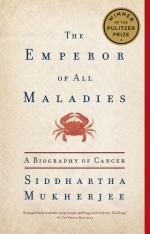
|
| Name: _________________________ | Period: ___________________ |
This test consists of 15 multiple choice questions and 5 short answer questions.
Multiple Choice Questions
1. In 1942, UK statisticians approached the Ministry of Health with the shocking news that cancer morbidity had risen ______ fold in the past 20 years.
(a) 20.
(b) 10.
(c) 5.
(d) 15.
2. The trend also raised questions regarding what?
(a) The hazardous work done by the poor.
(b) The amount of soot that the chimney sweeps carried home with them under the surface of their skin.
(c) The activities of these wealthy men.
(d) The secret lives of chimney sweeps.
3. The discovery of scrotal cancer helped to promote what?
(a) Protective breathing apparatus.
(b) Child labor laws.
(c) Public health.
(d) Unions.
4. By 1993, Slamon's early phase clinical trials had become a hot topic among ____________ cancer patients.
(a) Brain.
(b) Breast.
(c) Cervical.
(d) Testicular.
5. Most chemotherapy drugs by the 1980s targeted what?
(a) Cell growth.
(b) The patient's immune system.
(c) Red blood cells.
(d) Pre-cancerous cells.
6. In ___________, the quest for the cure for cancer through the study of cancer biology underwent a drastic reorganization. Scientists returned to studying genes.
(a) 1976.
(b) 1966.
(c) 1996.
(d) 1986.
7. The author discusses the importance of whose "OncoMouse?"
(a) Leder's.
(b) Farber's.
(c) Watson's.
(d) Popper's.
8. ________________ such as Doll and Hill, argued that exogenous chemicals caused cancer, although they could not offer a mechanistic explanation for their theory or results.
(a) Epidemiologists.
(b) Dermologists.
(c) Epidermologists.
(d) Dermatologists.
9. It was a risky prediction to attempt to verify untested theories through what?
(a) Clinical trials.
(b) Radical surgeries.
(c) Dissections.
(d) Animal research.
10. When was this cancer discovered?
(a) In the 1950s.
(b) In the 1980s.
(c) In the 1850s.
(d) In the 1930s.
11. "Part 6: The Fruits of Long Endeavors" begins with a quote by whom?
(a) John H. Watson.
(b) Sherlock Holmes.
(c) James Watson.
(d) Watson Smith.
12. During that time period, ________________ were often employed as assistants to chimney sweeps, often with fatal results.
(a) Children.
(b) Women.
(c) Young girls.
(d) Old men.
13. Susan Sontag is diagnosed with cancer. She begins to notices parallels between cancer and what other disease?
(a) Heart disease.
(b) AIDS.
(c) Tuberculosis.
(d) Pneumonia.
14. The choice between the two paths is ______________.
(a) Financial.
(b) Unusual.
(c) Instinctual.
(d) Stressful.
15. The author says his heart was in what?
(a) Laboratory work.
(b) Clinical work.
(c) Pediatrics.
(d) Veterinary medicine.
Short Answer Questions
1. In 1870, the per capita consumption in America was ________________ per year.
2. Have much Mukherjee's inclinations changed much since the first day of his internship?
3. The third camp, of ________________ successors, stood at the farthest periphery.
4. "Part 4: Prevention Is the Cure" begins with a quote from who?
5. Mukherjee discusses a new drug for the treatment of Chronic Myeloid Leukemia (CML). _________________ seemed to be the right drug to conquer CML.
|
This section contains 418 words (approx. 2 pages at 300 words per page) |

|




